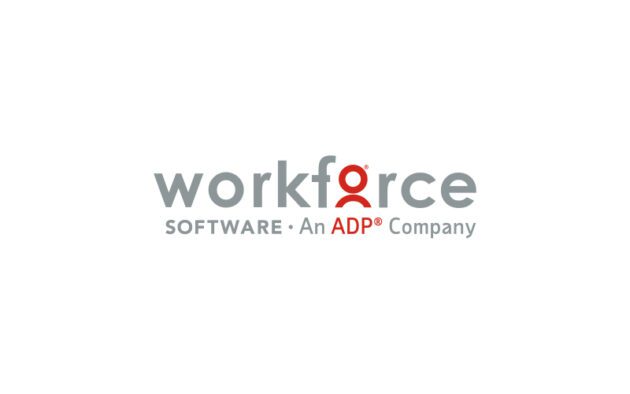New employee experience research shows gap in perceptions surrounding business resilience amid COVID-19 pandemic, signaling a need for digital transformation
May 26, 2021 – LIVONIA, MI –Today, leading global provider of cloud-based workforce management solutions WorkForce Software releases the findings of its workplace experience report. Stark discrepancies between organizations and their employees were revealed when it comes to the quality of the employee experience throughout the COVID-19 pandemic. This was especially true for the ‘deskless’ workers, those working in front-line roles and making up 80% of the total global workforce. Across the board, there were significant gaps between what employers believed they were providing and what employees are actually experiencing, suggesting employers are not delivering employees with the solutions necessary to engage easily in the new world of work.
COVID-19 upended the way we work, transitioning the majority of white-collar businesses to remote operations overnight. However, for many hourly workers, the experience looked quite different. Workers in industries most affected by the pandemic, including airlines, healthcare, oil and gas, retail apparel, gaming, and more, felt the brunt of the global health emergency’s impact. In many instances, deskless workers in service sectors were still required to report to work to ensure business continued despite the pandemic. WorkForce Software’s most recent report indicates that for these workers in particular, their organization’s ability to adapt to the changing labor landscape was more challenging than employers originally anticipated.
Shift-Scheduling and Lack of Flexibility Generate Frustration
According to the survey, employees felt less optimistic than employers about their company’s approach to scheduling shifts throughout the pandemic. Employees’ and employers’ opinions also diverged significantly on employer willingness to offer flexibility over the past year.
- 81% of employers surveyed believe their company has effectively adapted to pandemic-related scheduling issues.
- Only 64% of employees surveyed felt their organization had successfully adapted to shift-scheduling intricacies, a vast difference in perception.
- 82% of employers believe they offer scheduling flexibility, while only 59% of employees agree. Simultaneously, 87% of employers indicated they help hourly workers deal with personal circumstances that affect work schedules, while only 60% of employees agree.
- As a result, more than half of employees stated they would prefer to work for an employer that offers more flexibility in scheduling, showcasing just how integral understanding and finding flexible solutions are in a post-pandemic world.
“Our current business environment demands employee empowerment defined by better training, easier time-tracking, and control over scheduling and leave management,” said Mike Morini, CEO of WorkForce Software. “For employers and employees alike, the disconnect leads to considerable business impact in the form of increased employee turnover and reduced productivity and engagement and will continue to be an impediment to resilience and organizational success now and in the future. Companies must actively engage their employees through improved workplace experiences to more quickly and easily meet evolving workforce challenges.”
COVID Response and Pay Rates Expose Deeper Divides
As the pandemic ignited uncertainty surrounding business operations and a path forward, hourly workers felt their employers could have done more to communicate with and support employees. Particularly when it comes to task-based pay, employers and employees experience clear differences in issuing and receiving adjusted pay, based upon task completion.
- 81% of employers believe they adapted to COVID effectively, while 64% of employees felt similarly.
- 70% of employers reported that some hourly employees are paid different rates depending on which task they are performing at a given time; however, only 26% of employees surveyed indicated that they receive task-based pay.
Use of Outdated Tools and Technology Persists
Many companies are still relying on antiquated systems to manage their workforce, demonstrating a need for immediate investment in modern solutions.
- Only 50% of employees indicate using online portals to track time and attendance.
- 56% of employees report severely dated methods for time tracking, including mounted wall clocks, paper forms, and punch cards.
- For employees that are afforded online portals when compared to those not, more feel they are offered scheduling flexibility and are assisted with personal circumstances, noting the adoption of more immediate contactless screening.
View the workplace employee experience gap report here. This global survey was conducted by Pollfish on behalf of WorkForce Software in Q1 2021. It includes responses by 1,300 employees and 1,420 employers from a wide range of industries across 8 countries.
About WorkForce Software
WorkForce Software is a leading global provider of cloud-based workforce management solutions. The company’s WorkForce Suite adapts to each organization’s needs, delivering a breakthrough employee experience – no matter how unique your pay rules, labor regulations, schedules, and employee self-service needs are. Enterprise grade and future-ready, WorkForce Software removes the noise from a managers’ busy day, protects your organization from compliance risks, provides leadership with strategic business insights, and delivers real employee engagement at the time and place work happens. Whether your employees are global, unionized, full-time, part-time, mobile, or seasonal, WorkForce Software makes managing your global workforce easy, less costly, and more rewarding for everyone. For more information, please visit workforcesoftware.com.
Media Contact
Lisa Hajra
WorkForce Software


